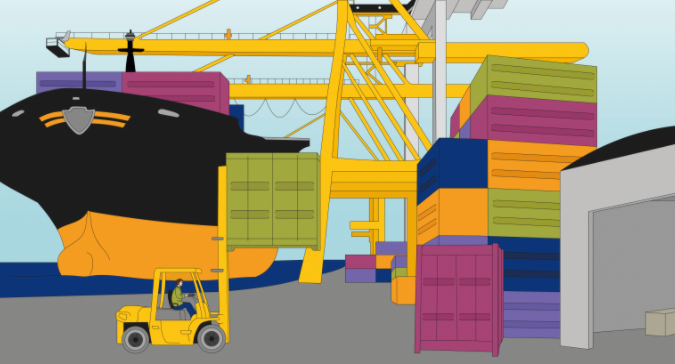The Small Cell Forum (SCF) published its first in a series of requirements reports, focusing on technical blueprints developments, in an effort to boost the delivery of robust cellular connectivity for seaports.
Namely the paper sets out a framework of connectivity requirements from 12 European ports and ports organizations, including commercial drivers and perceived challenges to digital transformation.
As explained, the report gathered inputs from senior port representatives, summarizing commercial ambitions and operational imperatives, development plans, tenant connectivity requirements and examples of digital projects and private network trials already underway.
In light of the situation, Richard Kennedy, Small Cell Forum’s Chief Operations Officer said:
“It is clear digital transformation is an inevitable part of the future of ports and the industries and transport networks that serve them or use them. Our endgame here is to consider the commonalities of current and future requirements and the extent to which a scalable, baseline blueprint for cellular connectivity can be developed for the sector that reduces the need to reinvent the wheel for each port, reduce costs and speed deployments.”
In fact, the paper has set out the framework of requirements that emerged from Small Cell Forum’s conversations with ports. In summary, the key elements of those requirements are among others the following:
- Coverage
- AR and VR applications
- Digital ‘twins’
- Autonomous shipping
- Automated or self-driving cranes, trucks and everything else
- Digital tracking systems
- Reservation systems
- Security programmes
- Drone-based services
- Access to information about all ship movements
- Services that attract new business
- Tracking anything that moves and using the data to improve efficiency
- Real-time monitoring and analysis of motion and environmental data
- Remotely controlled traffic flows
- Administration and document flow
- Real-time information about infrastructure, water and air
- Standardised data exchange to manage all activities during a port call
- Track and trace system for import cargo
- Support system for rail and other transport
- Accurate prediction of arrivals
- Digital tools for optimum asset management
- Online port management systems
“This paper is the first step in what we hope will be an ongoing engagement with seaports, where the focus is on a deep dive into the sector’s evolving business requirements and how these must be supported by 5G-Era technologies. Together with fellow members of the Small Cell Forum, we thank the participating seaports for their warm welcome and look forward to supporting their development”.
…as Art King, IBN Technologies for Corning Optical Communications, noted.
Overall, one of the most important conclusions in the report, is that private networks are not a use case waiting for 5G to happen. There are plenty of current commercial deployments based on 4G-Era technologies. In fact, private LTE (4G) solutions are already available today that can seamlessly migrate to private 5G networks when standards and ecosystem support full commercial deployment.
Explore more herebelow


































































